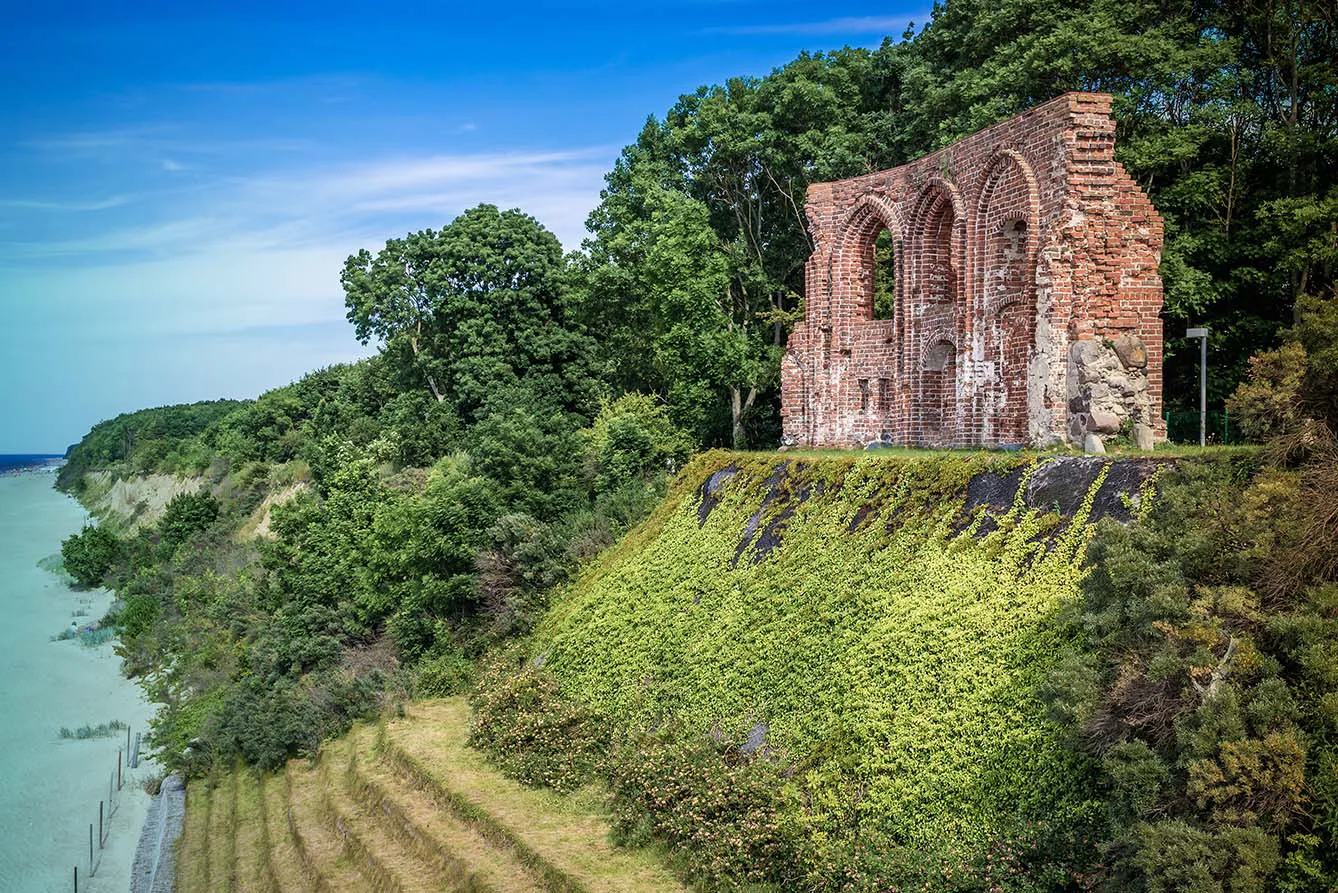It’s a dark and gloomy night, with majestic waves of the restless millennia-old sea crashing against a tiny strip of sand at the cliff’s feet. The rolling sound of thunder fills the air as the midnight sky is ripped apart by lightning, fleetingly casting the long shadow of a single gothic wall of what used to be a church on the ground. Sound like a horror story? Well then, try to pronounce the name of the village you’re in – Trzęsacz. Now, that’s scary.
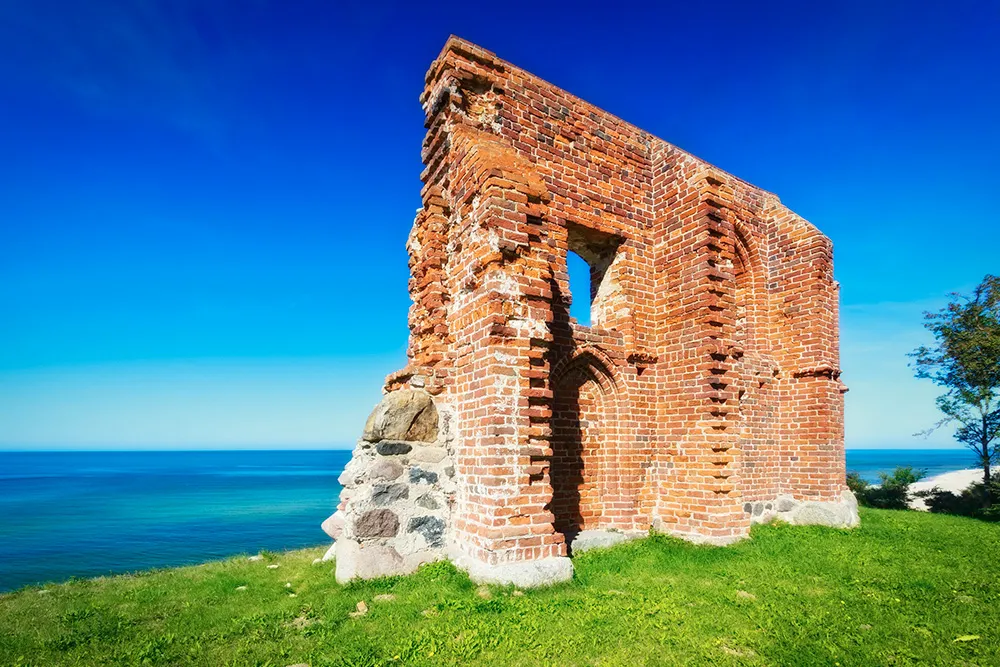
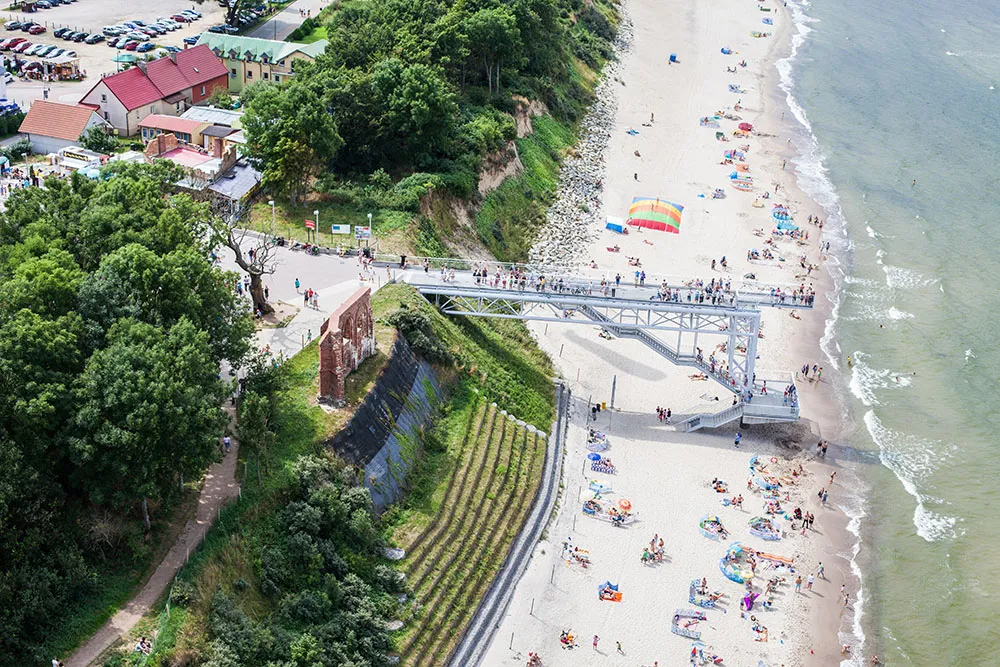
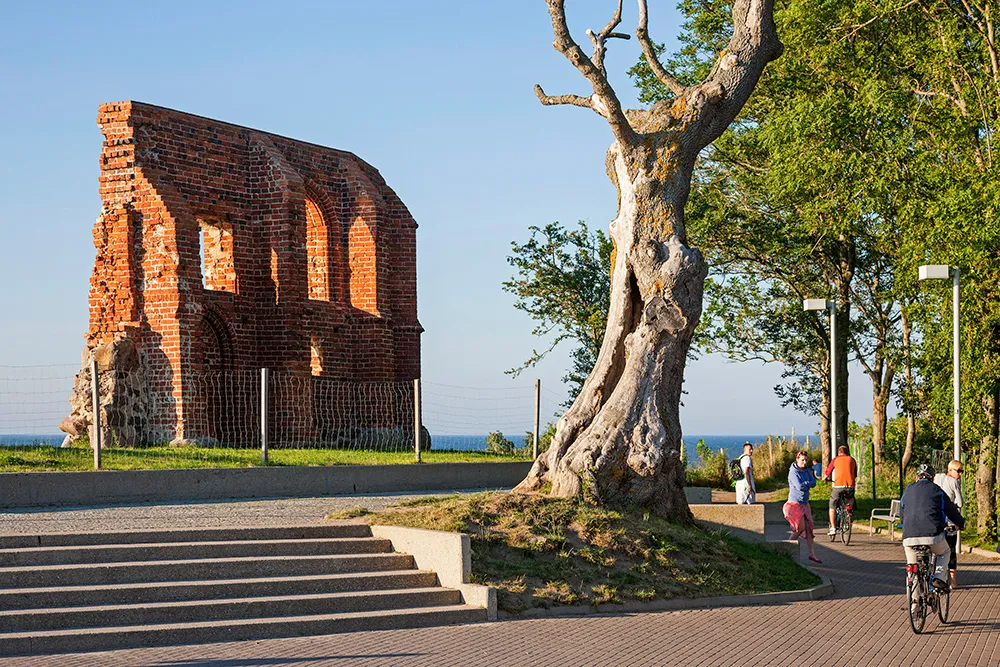
Scary story aside, the history is long and interesting yet simple. Located on the Baltic coast near Szczecin (formerly German Stettin), Trzesącz is a hundred-strong village formerly named Hoff in German. Hoff means ‘manor,’ and the origins of it date back to at least the 14th century, with farmers cultivating hundreds of hectares of fields around. In the early 20th century, Trzęsacz, like most villages and cities on the coast, became hospitable to tourists looking to cure their bodies with iodine and their nerves with a magnificent view of the distant horizon.
To save a wall
What makes this small village unique is not necessarily its gothic church but the fight to save it from the sea. The Church of St Nicholas was founded in the 12th century, with the current stone construction built in the late 14th century. The building marked the center of the village, with a twenty-minute walk to the cliff (according to some sources, nearly 1800 meters). In the 16th century, the church changed its affiliation as locals turned Protestant.
But the Baltic Sea was already eroding away the land, and by 1750, the distance from the sea to the church had shrunk to a mere 58 meters. By 1809, the sea had swallowed parts of the original cemetery that had surrounded the church, and works on the new church began.
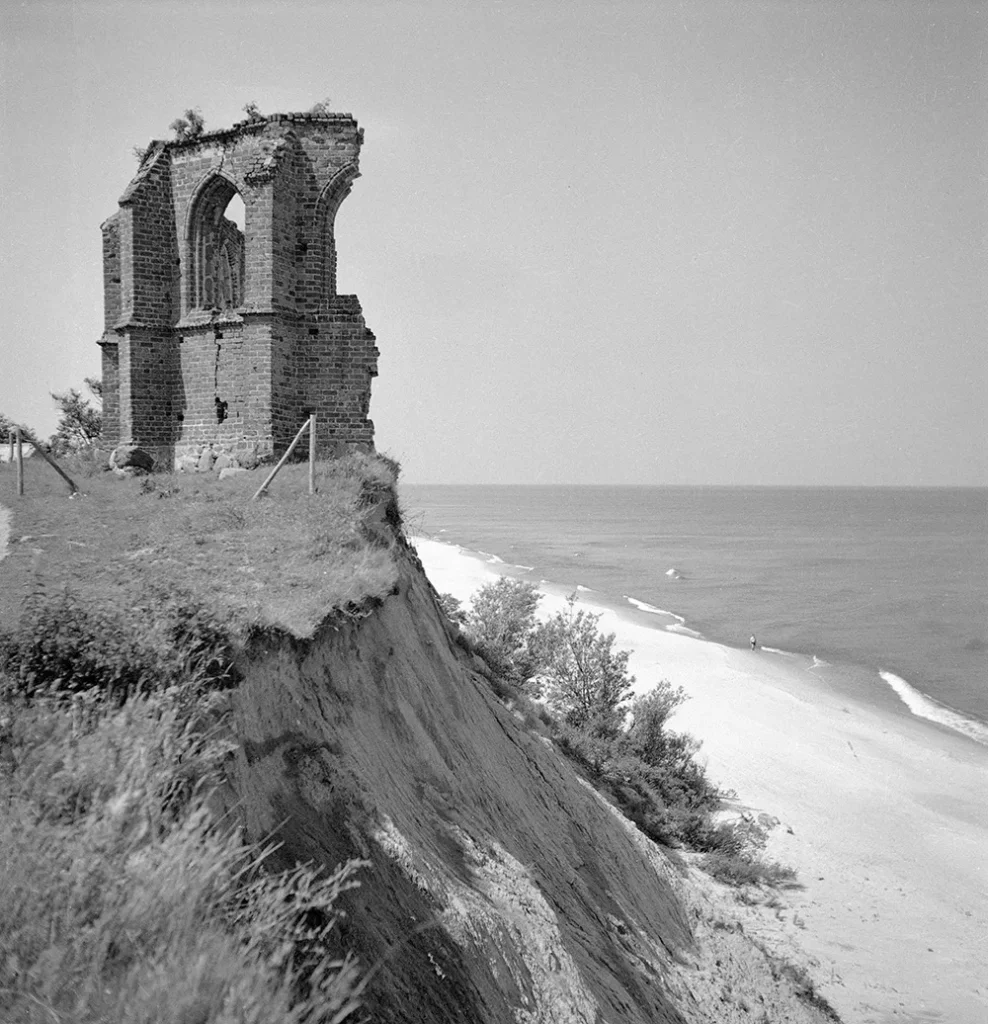
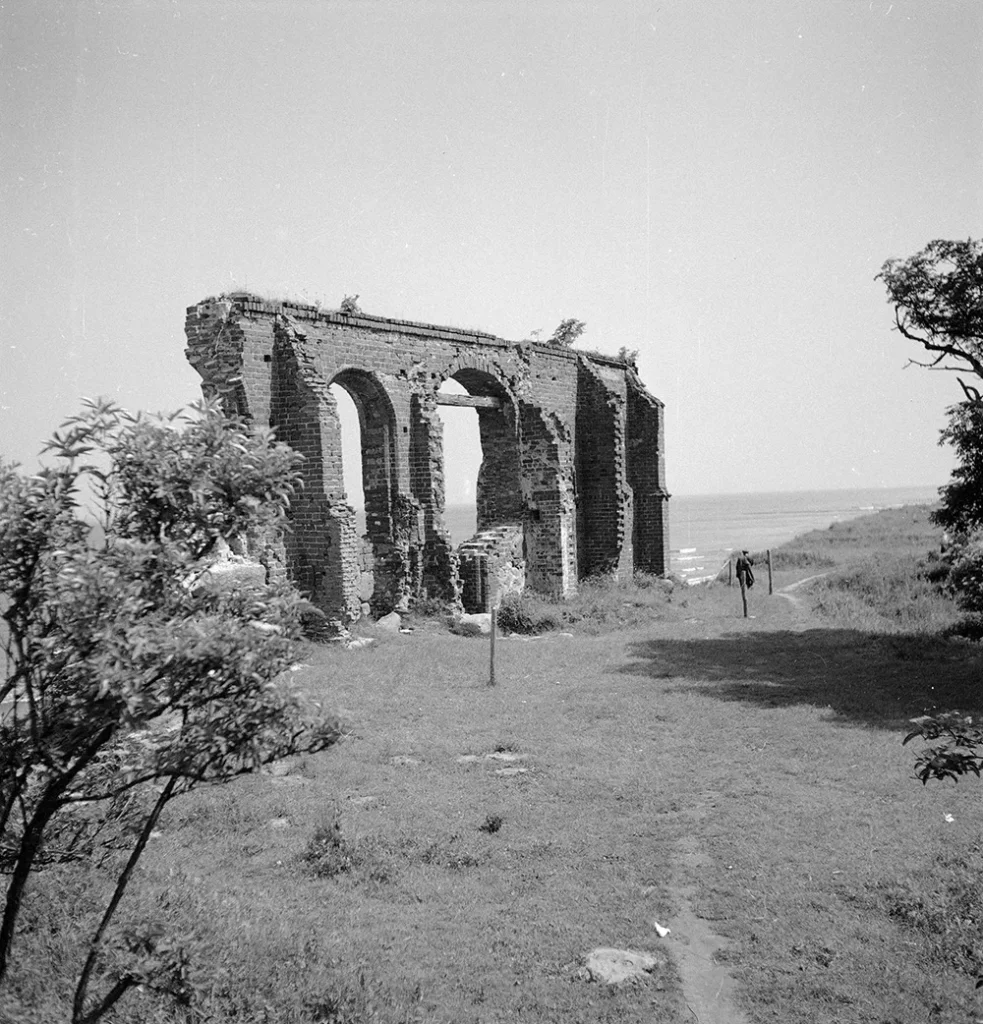
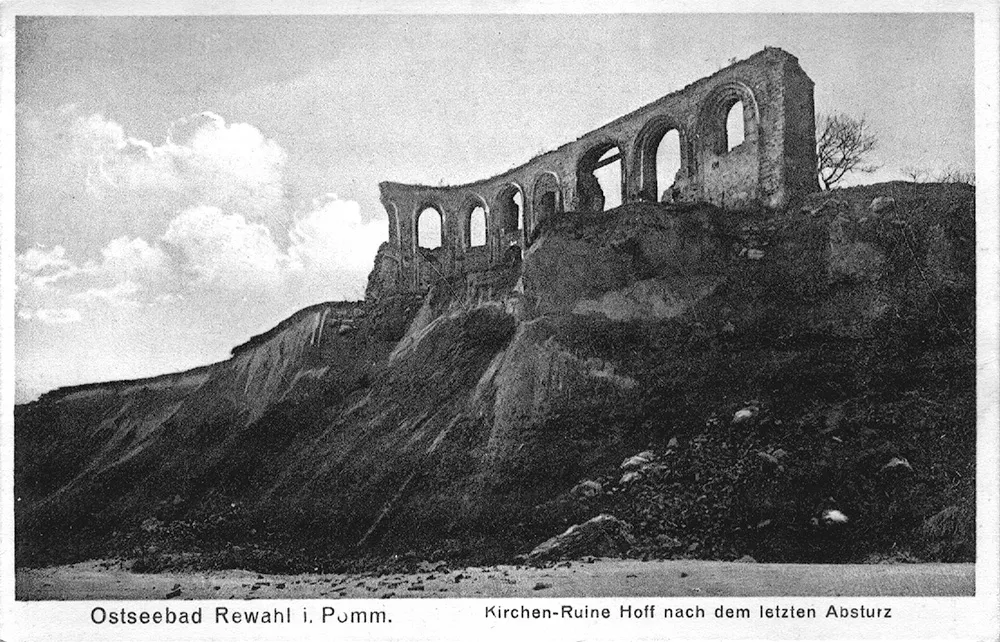
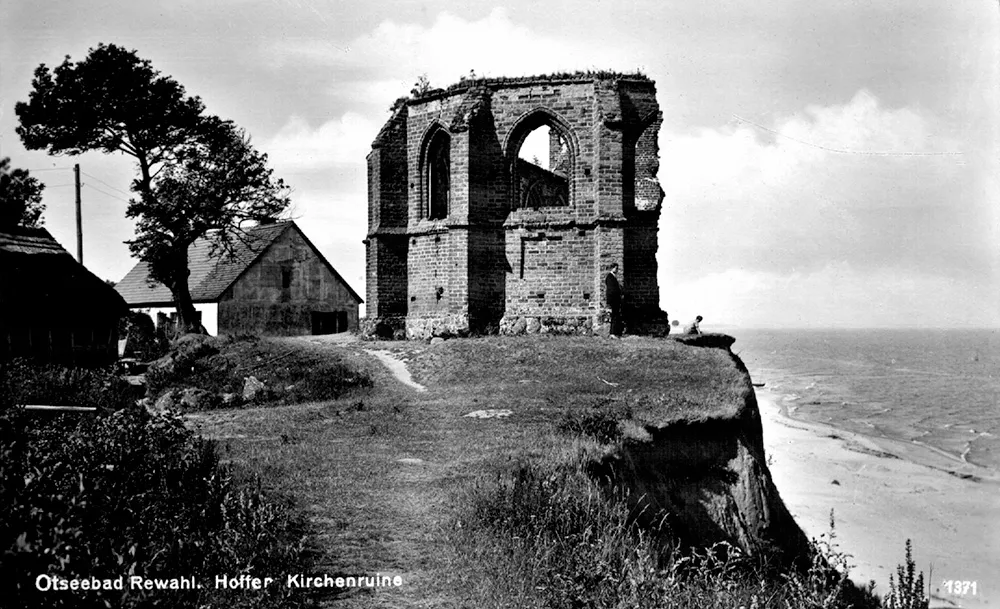
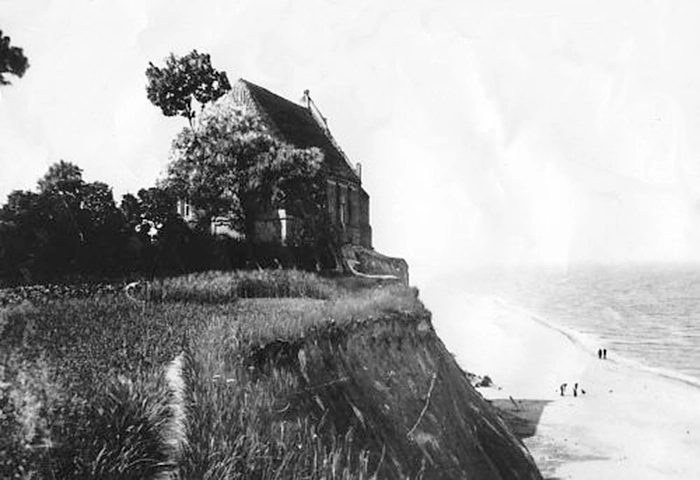
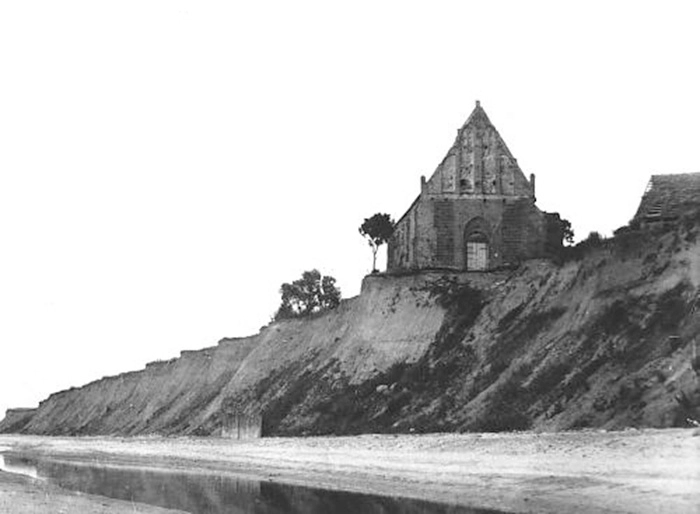
You can still see the entire building in photos from the 1870s. But the sea was determined. Precisely in 1900, the northern wall was destroyed, and since then, villagers have slowly watched other parts of the building turn to rubble. The church’s furniture was eventually evacuated to the local parish or more distant collections in Stettin and Berlin.
Trzęsacz, the real ghost story
Having visited Trzęsacz as a child in the 1980s, I remember the sense of fatal determinism that, at some point, the gothic church would be no more. That was a few years after the last time the sea pushed the cliff yet closer to the church, ruining another part of the building. Then, a few years later, the last of such events took place when another part of the southern wall perished.
The local community decided that this had to stop. Several projects were made to save the last remnants of St Nicholas’ church, including moving it farther from the cliff. Eventually, it was decided to protect the part of the cliff from abrasion by strengthening it with gabion – basically, stones in large chains that can – and will – turn green over time.
The structure was also reinforced, so the only remaining – yet still authentic! – church wall overlooks the sandy beach, which is jam-packed with tourists from the nearby resort town of Rewal in summer.
Some say that the church’s destruction was an act of vengeance: when the Sea goddess was caught by fishermen and imprisoned by a local priest and later buried in the church’s cemetery, her father, Baltic, would seek her corpse to get her a maritime funeral. Let’s just hope he achieved his noble goal – and that the remains of the church will be here for a long time.


